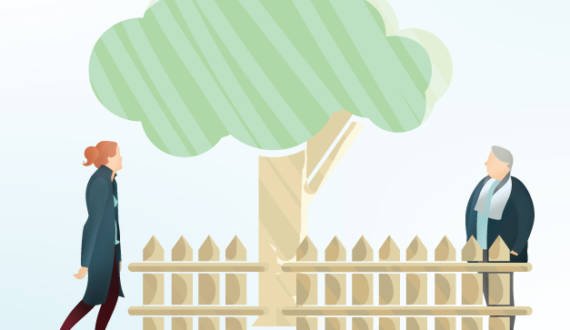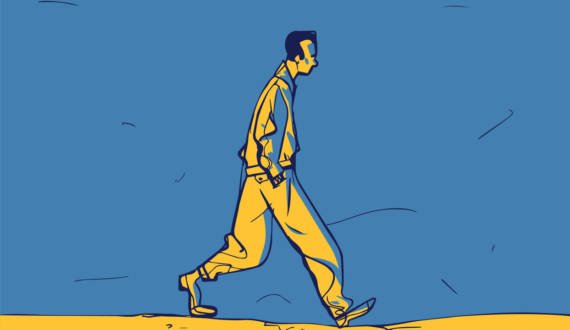Incarceration – The 51st State (Part 1)
The Social Determinants of Health include five separate pillars; the first is Social and Community Context. Within Social and Community Context is incarceration. A key element when discussing social and community context, inequities in health, and the very nature of the Social Determinants of Health. Generally, incarceration is confinement in a jail or prison, the act of imprisoning someone or the state of being imprisoned.
Nelson Mandela said, “No one truly knows a nation until one has been inside its jails. A nation should not be judged by how it treats its highest citizens but its lowest ones.” This article will look at incarceration in the United States and how Nelson Mandela’s words are still valid.
Incarceration Defined
Incarceration means being in jail or prison and includes both pre and post-sentencing. A synonym for incarceration is imprisonment, which is the act of taking away someone’s freedom and putting that person in prison. Both definitions are important to consider as you read this article.
Incarceration and Social Determinants Of Health – The Relationship
Remember that the Social Determinants of Health focus on the non-medical factors that impact our health. Previous articles have addressed loneliness, social cohesion, civic participation, and discrimination; this article involves each of these topics. The family and the incarcerated family member both suffer from loneliness. The incarceration uproots the individual and community relationships. Finally, the discrimination in the numbers of incarcerated persons is dramatic.
The incarceration rate of black men is six times the rate of white men. With the higher incidence of incarceration of black men, the impact on the community, and the rated impact on health, it is logical to conclude that this is a social determinant of health.
Statistics
There are 2 million people in the nation’s prisons and jails—a 500% increase over the last 40 years. With an overall incarceration rate of 639/100,000. Changes in sentencing law and policy, not changes in crime rates, explain most of this increase. Black men are six times as likely to be incarcerated as white men, and Latinos are 2.5 times as likely. For Black men in their thirties, about 1 in every 12 is in prison or jail on any given day.
The US incarceration rate is higher than any other county, including Russia and China. The US has 5% of the world’s population and 25% of the world’s incarcerated. For US residents born in 2001 (20 years old), 1 in 9 men are in jail, this represents 1 in 3 for black men, and 1 in 17 for white men; for women1 in 56 of women are in jail, of which 1 in 11 are white, and 1 in 18 are black.
While incarceration has risen over time, crime rates have dropped. Between 1993 and 2019, violent crime has decreased by 74%, and property crime has decreased by 71%. Notwithstanding the drop in crime rate, incarceration rates have increased, as has the cost of prisons. In 2016 the cost of the criminal justice system, including corrections, was $295 billion, roughly $134.400 per person detained. $88 billion of that directly goes to running jails and prisons. Based on $88 billion, the cost per prisoner is about $44,000. In addition to the $44,000, there are innumerable indirect costs, including the family’s costs and the criminal record cost related to housing, jobs, and healthcare. The actual cost to the American taxpayer is $63.4 billion.
Whether black or white, those incarcerated come from the most disadvantaged neighborhoods, with little opportunity for work. The nature of the disadvantage is the social and economic reality that drives the incarceration rate.
The Incarcerated – Older Inmates
In 2015 there were over 145,000 inmates 50 or over. Older male inmates generally are a different category compared to younger inmates. They often include career criminals, older offenders (first offense after 50), and those growing old in prison. We have three questions when considering older inmates. How do you address the needs of a population with limited mobility and other related needs, how do you address the health needs, and how do you address the challenges older inmates face on release.
The design of the prison often challenges older inmates. The design issues include the stairs, the distance to the cafeteria, and the cold and damp environment. In response to these issues, some inmates choose not to engage.
The health needs of the older inmates include managing chronic diseases that become problematic after 50. Other physical health problems include arthritis, hypertension, venereal disease, ulcers, prostate problems, myocardial infarction, and emphysema. Additionally, there are problems related to incontinence, sensory and flexibility impairment, and limitation in gross physical functioning. Addressing the health care needs while required is very much based on the prison. Most older inmates display no information as to their health or how to maintain their bodies.
Older prisoners released into society face the same re-entry problems as all prisoners but with less flexibility to change. Society may be unfamiliar to the released prisoner; the family dispersed, limited housing, and no handoff of health information or assistance in establishing Medicare. Growing old is difficult for most people, even those without the additional challenges posed by prison.
The Incarcerated – Men
As indicated above, the large majority of men incarcerated are black men. Of the men incarcerated, over 37% had dropped out of school before arrest. Black men are more likely to be imprisoned for drug crimes, while white men are more likely to be imprisoned for property crimes. In short, in 2019, 1,380,427 were in prison, and 93% of the population are male, or 3,567/100,000 men are currently in state and federal prisons.
The Incarcerated – Women
Currently, there are approximately 107,955 women in state and federal prisons. Almost 50% of women in jail are women of color. The majority of women are in their mid-thirties and likely to be convicted of a drug crime. Finally, between 77% and 90% of women have suffered emotional, physical, or sexual abuse. While we will discuss health issues later in this article, note that the gynecological needs of most women are dismissed as not necessary by most prison officials.
Challenges with Incarceration – Numbers
We have previously discussed the number of people in jail, approximately 2 million people. But when we look at numbers, the missing elements are solitary confinement and overcrowding. There are currently approximately 80,000 prisoners in solitary confinement. That number is almost equal to the number of total incarcerated in Britain. When prisoners are in solitary confinement, they are in a cell that measures between 6×9 and 8×10. Prisoners remain in that cell with no personal contact between 22 and 24 hours per day. While not illegal in all 50 states, a UN expert on torture found that it should only be used in exceptional cases and never with children or the disabled. While many states have enacted policies to limit the use of solitary confinement, 40 states have created supermax prisons designed to hold prisoners in long-term isolation.
Given the number of prisoners, it is not surprising that prisons are overcrowded. State prison systems are, on average, overcrowded. Cells built for a single inmate now house three inmates in the same space. In some states, judges have forced the release of inmates due to overcrowding. While being in a cell is better than solitary confinement, some courts still find overcrowding cruel and unusual behavior.
Challenges with Incarceration – Rehab or Warehouse
At one time, there was a measure of rehabilitation in our nation’s prisons. There is current concern that rather than rehabilitation, we are warehousing our prisoners. The current focus in prisons today is on punishment more than rehabilitation. The result is that released prisoners leave prison without job training or education. Many years ago, this training was a staple in prisons. Twenty years ago, prisoners were able to get job skills or college education. Today they are warehoused with few opportunities to gain skills that will support them when released.
Challenges with Incarceration – Mental Health
In 1980 the Federal District Couty issued a ruling in Ruiz v. Estelle. The ruling addressed six criteria of mental health care and further required jails as follows:
- A standard program for screening and evaluation of mental health needs.
- Active treatment, not just supervision
- Treatment by trained individuals
- Maintenance of records
- Medication practices per the AMA
- Identify, supervise and treat suicidal prisoners.
Of course, most prisons do not follow these requirements.
Prisoners may come to prison with mental health issues, such as loneliness may lead a person to crime for acceptance. Crime may help a person to self-regulate symptoms of mental illness. Once in jail, the stress inherent in incarceration includes loneliness, anxiety, depression, life dissatisfaction, and suicidality. The difficult conditions described above and the attitudes of custodial staff lead to the deterioration of the prisoner’s mental health. Over 50% of the incarcerated have a mental health problem. Mental health issues also affect safety; between 2-8% of prisoners with mental health problems are more likely to be sexually victimized while incarcerated.
Older Prisoners Face Additional Problems
Older prisoners have a more challenging time coping with the stress of prison; 78% indicated that they had trouble dealing with other prisoners. While there are no numbers on how many prisoners have Alzheimer’s disease, it is likely that as the population of older prisoners grows, so will the likelihood of dementia. Court cases have determined it is not enough to medicate the mentally ill; you must provide services. As the population ages, the cost of care will too.
Women prisoners also face additional problems; over 73% of women in prison have symptoms of mental health disorders. 74% of women in prison meet the criteria for substance dependence. 68% of women in prison suffered past physical or sexual abuse. One study found that many women in prison suffered abuse before the age of 16, making them 980% more likely to need mental health treatment, treatment that is not available.
Challenges with Incarceration – Physical Health
In Estelle v. Gamble (1976), The Supreme Court determined that the deliberate failure of prison authorities to address an inmate’s medical needs constitutes “cruel and unusual punishment” held that deliberate indifference to serious medical needs of prisoners constitutes the unnecessary and wanton infliction of pain. The result is that in many instances, the inmate might receive better and more consistent healthcare in prison than outside.
Many individuals enter prison without ever having received consistent healthcare. Prison is not only a loss of all freedom, but it is also a hotbed of disease. Inmates have higher odds of hypertension, asthma, arthritis, cancer, and hepatitis. Tuberculosis (TB) is found in prisons and is one of the top ten causes of mortality worldwide. TB is an airborne disease, and the overcrowding of prisons contributes to its spread. Hepatitis C Virus (HCV), often related to the use of illicit drugs, has a high rate in prisons.
Unlike the majority of the world, inmates are at high risk for HIV. The risk comes from sharing needles, no use of condoms, and unsafe tattooing, all add to the risk of HIV. Once prisoners are diagnosed, the availability of antiretroviral treatment is difficult, and the stress of prison exacerbates the diagnosis.
Similar to the rest of the world, COVID-19 has hit prisons hard. In fact, prisons have a disproportionate share due to the close surroundings, bad airflow, and less then hygiene surroundings. The rate of infection is 696/100,000 compared to 250/100,000 in the community. The rate of death exceeds the community by three times. The reality is that to provide care to people in prison; we must consider the same standard of care that we would apply to our communities, including testing and vaccinations.
While the diseases mentioned above include women, women have additional challenges. More often than not, prison officials ignore the health needs of women. Breast and gynecological exams are often ignored or not available. Prisons often ignore the need for prenatal and postpartum care. The level of care required by Estelle v. Gamble seems missing from the specific care needed by female inmates.
The issue of incarceration requires an understanding of the time spent in jail and what happens when people are released. Next week we will discuss the post-incarceration challenge and look at some innovative programs that might help address the challenges of incarceration.



